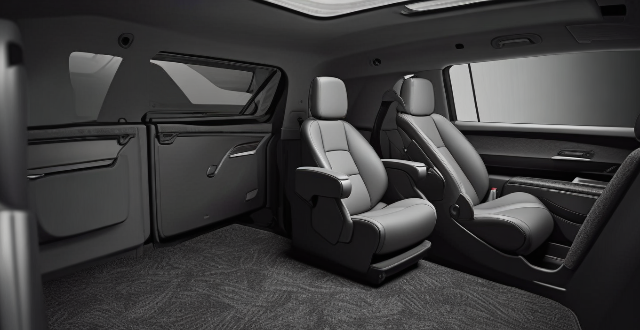Ergonomics is crucial in car interior design for enhancing driver comfort, safety, and overall driving experience. It involves designing seats for support, placing controls strategically for accessibility, ensuring good visibility, incorporating safety features, soundproofing for quiet cabins, providing climate control for comfort, and offering ample storage spaces for organization. These factors contribute to creating a user-friendly environment that makes driving safer and more enjoyable.

The Role of Ergonomics in Car Interior Design
Ergonomics, also known as human engineering or human factors engineering, plays a crucial role in car interior design. It is the science of designing and arranging equipment and spaces to be used by people in a safe, comfortable, and efficient way. In the context of car interior design, ergonomics focuses on creating a user-friendly environment that enhances driver comfort, safety, and overall driving experience.
Enhancing Driver Comfort
One of the primary goals of ergonomics in car interior design is to improve driver comfort. This involves considering various factors such as:
- Seat Design: Ergonomically designed seats provide adequate support to the driver's body, reducing fatigue and discomfort during long drives. They should be adjustable to accommodate different body types and preferences.
- Control Accessibility: Controls like steering wheel, pedals, and infotainment system should be easily accessible and within reach of the driver. This reduces the need for excessive stretching or leaning, which can cause strain and distraction.
- Visibility: Good visibility is essential for safe driving. Ergonomic car interiors ensure that all necessary controls and displays are clearly visible to the driver without requiring them to take their eyes off the road for too long.
Improving Safety
Another key aspect of ergonomics in car interior design is enhancing safety. Some ways this is achieved include:
- Reduced Distractions: By placing controls strategically and ensuring they are easy to use, designers can reduce driver distractions. For example, touchscreen interfaces should be intuitive and require minimal interaction time.
- Safety Features: Ergonomic designs incorporate safety features like airbags, seatbelts, and crash protection systems. These features are designed to protect occupants in case of an accident while minimizing injury risks.
- Emergency Response: In emergency situations, drivers need quick access to controls like brake pedals and gear shifters. Ergonomic designs ensure these controls are easily locatable and operable even under stress.
Enhancing Driving Experience
Finally, ergonomics also aims to enhance the overall driving experience by considering factors such as:
- Soundproofing: A quiet cabin allows drivers to focus better on the road ahead. Soundproofing materials and techniques are used to reduce noise levels inside the vehicle.
- Climate Control: Proper ventilation and climate control systems maintain a comfortable temperature inside the car, improving driver comfort and concentration.
- Storage Spaces: Ample storage spaces help keep the cabin organized and clutter-free, contributing to a more pleasant driving environment.
In conclusion, ergonomics plays a vital role in car interior design by focusing on driver comfort, safety, and overall driving experience. By considering various factors such as seat design, control accessibility, visibility, safety features, soundproofing, climate control, and storage spaces, designers can create user-friendly environments that make driving safer and more enjoyable for everyone involved.